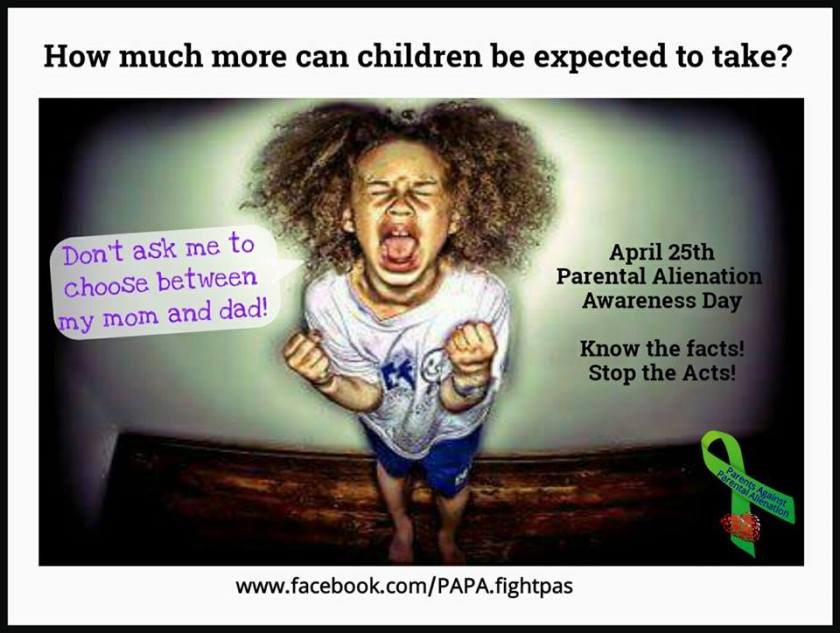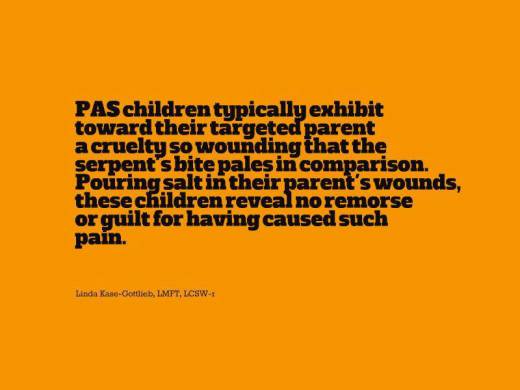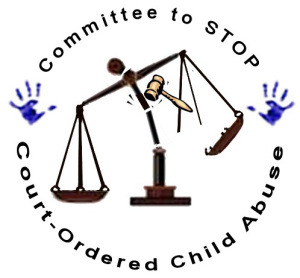Parental alienation is the enactment of power and control over a targeted parent through a child or children by an alienating parent. To that extent, it falls within the widely accepted definitions of domestic violence and abuse (i) which are enshrined in legislation and policy around the world. However, in our experience, whilst domestic violence and abuse may be recognized as an element of the relationship between parents in dispute over children matters, the professionals who advise the courts rarely, if ever, approach the case with an understanding that a child’s rejecting position may be the extension of a pattern of domestic abuse that has been present between the parents whilst the family was together.

Around the world, domestic violence and abuse is almost exclusively set within a feminist framework which argues that it is ‘a consequence of the inequalities between men and women, rooted in patriarchal traditions that encourage men to believe they are entitled to power and control over their partners’ (ii). Indeed, the 1993 United Nations resolution (iii), the first international human rights instrument to exclusively and explicitly address the issue, defined domestic violence and abuse as ‘any act of gender-based violence that results in, or is likely to result in, physical, sexual or psychological harm or suffering to women’. This both reflects and reinforces the belief and the standpoint that domestic violence and abuse is perpetrated by men against women. So widely is this narrative believed, so often is it repeated and so powerfully does it match the stereotypes about gender behaviours and relationships that the international research goes almost unnoticed. So, what does the research tell us?
Contrary to the orthodox belief, the international research clearly demonstrates that domestic violence and abuse is not a problem rooted in gender power imbalances. For example, a 2014 report (iv) published in the United Kingdom which examined the male control theory of men’s partner violence, concluded that, ‘contrary to the male control theory, women were found to be more physically aggressive to their partners than men were,’ and that, ‘using Johnson’s typology (v), women were more likely than men to be classed as “intimate terrorists,” which was counter to earlier findings.’ They conclude by suggesting that their findings do not support the male control theory of intimate partner violence (IPV), but that they ‘fit the view that IPV does not have a special etiology, and is better studied within the context of other forms of aggression.’ Similarly, the respected US experts Joan Kelly and Michael Johnson suggest that the data supports claims ‘that women both initiate violence and participate in mutual violence and that, particularly in teenage and young adult samples, women perpetrate violence against their partners more frequently than do the men’ (vi). Significantly, a 2007 study (vii) in the United States found that almost 24% of all relationships had some violence, and half (49.7%) of those were reciprocally violent. It found that in non-reciprocally violent relationships, women were the perpetrators in more than 70% of the cases. However, it found that men were more likely to inflict injury than women were. These, and many, many other studies demonstrate very clearly that, rather than domestic violence and abuse being a gender issue, it is a result of issues such as individual pathology, substance misuse and relationship dysfunction and that women and men both inflict it and are subject to it.
In their important work (referred to above), Joan Kelly and Michael Johnson argue that empirical research has demonstrated that intimate partner violence is not a unitary phenomenon and propose a differentiation approach to family violence and abuse that recognises four types that can be differentiated with respect to partner dynamics, context, and consequences. These, they describe as Coercive Controlling Violence, Violent Resistance, Situational Couple Violence, and Separation-Instigated Violence (we would use the term violence and abuse in all of the categories except Violent Resistance).
Coercive controlling violence and abuse occurs when one parent controls the other through fear, physical harm, mental and emotional harm or psychological threat. In these cases, there is a clear power imbalance in the relationship. Situational couple violence and abuse occurs as fights between couples where both are involved. It may be recurring or ‘one off’ in nature and usually causes shame and embarrassment. Separation instigated violence and abuse (i.e. that which can accompany a divorce or separation) occurs at the end of a relationship and, whilst it may cause distress, it is not experienced as control. It often involves violence on the part of both parents, both physical and verbal fighting and parents, again, will often feel ashamed and uncomfortable. Violent resistance is the use of violence to resist a violent or coercively controlling partner. It may be almost automatic and surfaces almost as soon as the coercively controlling and violent partner begins to use physical violence. Our practice tells us that, in cases where violence and abuse is either the cause, or is a contributing factor, in a child’s rejecting position, it is that which falls into the coercive controlling violence and abuse category that is at play. By extension, it must be recognized that not all types of domestic violence and abuse can be assumed to be the cause of alienation.
In looking at this category more closely and in examining how it is a constituent part of parental alienation, we consider that the exercising of coercive power and control by one parent over another is invariably reflective of a learned family narrative that is passed down through the generations and it is, therefore, within this framework that we examine the potential for domestic violence or abuse to have played a part in causing or contributing to a child’s rejecting position. Gendered models of violence or abuse, such as a patriarchal analysis, leads to omission of critical aspects of understanding. It conceptualises women’s and children’s experience as being the same rather than different and legitimises or dismisses women’s use of violence against men and against their children. Worse than this, it transmits generational trauma and prevents an interruption of the cycle of power and control through the resolving of trauma patterns. Understanding how power and control plays itself out in the family means understanding dysfunction and how the use of violence to uphold power and control, whether that is physical, emotional or psychological, is woven into both the horizontal and vertical relationship patterns.
Working within an understanding that domestic violence and abuse and, in particular that which takes the form of coercive control, is a generational issue rather than a gender issue, it is important to examine and understand the specific family and the specific family dynamics and to recognize and understand the unspoken messages that play themselves out in the family drama. In exploring whether domestic violence or abuse is either the cause of, or is a contributing factor in, alienation, it is necessary to analyse the family history of both parents, the attachment patterns of children and parents in those family systems, parental behaviors, and power and control patterns. This is known as psycho-genealogy and it is an extremely important tool in understanding your own alienation experience.
A Generational Model of analysis of power and control patterns looks for the presence of unresolved trauma, personality disorder, a lack of empathy, poor interpersonal skills, abandonment issues and an inability to manage rage. Importantly, it recognizes that power and control through violence is a learned behavior transmitted in childhood experiences of being parented and establishes where trans-generational transmission of trauma patterns may be being played out in the parent/parent and parent/child relationships. It also conceptualises male and female responsibilities for violence and abuse as belonging to each, individually and separately from that of their children but identifies where children are being used as conduits for the continued use of pre-existing power and control behaviours. In this way, it protects children by highlighting and preventing risky behaviours in parenting and recognises that children who are subjected to parental alienation are, themselves, victims of abuse. By differentiating between different elements of behavioral violence, it is possible to establish its roots and determine the treatment for it.
[This is an extract from the forthcoming book ‘Understanding parental alienation: learning to cope, helping to heal’ by Karen Woodall and Nick Woodall]
Notes:
i. For example, the UK Government defines domestic violence and abuse as ‘any incident or pattern of incidents of controlling, coercive, threatening behaviour, violence or abuse between those aged 16 or over who are, or have been, intimate partners or family members regardless of gender or sexuality’.https://www.gov.uk/domestic-violence-and-abuse [Accessed 10 March 2015].
ii. Women’s Aid (2006). What is the cause of domestic violence? [online]. London: Women’s Aid. Available from:http://goo.gl/Jd4y2z: [Accessed 11 March 2015].
iii. United Nations General Assembly (1993) Declaration on the Elimination of Violence against Women. A/RES/48/104
iv. Bates EA, Graham-Kevan N and Archer J (2014) Testing predictions from the male control theory of men’s partner violence.
v. Johnson, M. P. (2008)A Typology of Domestic Violence: Intimate Terrorism, Violent Resistance, and Situational Couple Violence. New Hampshire: Northeastern University Press.
vi. Kelly, J. B. and Johnson, M. P. (2008), Differentiation among types of intimate partner violence: research update and implications for interventions. Family Court Review, 46: 476–499.
vii.Differences in Frequency of Violence and Reported Injury Between Relationships With Reciprocal and Nonreciprocal Intimate Partner Violence. Daniel J. Whitaker, PhD, Tadesse Haileyesus, MS, Monica Swahn, PhD, and Linda S. Saltzman, PhD. American Journal of Public Health. May 2007. Volume 97, Issue 5.
 Reblogged on WordPress.com
Reblogged on WordPress.com
Source: The Role of Domestic Violence in Parental Alienation















Reblogged this on World4Justice : NOW! Lobby Forum..
LikeLiked by 5 people